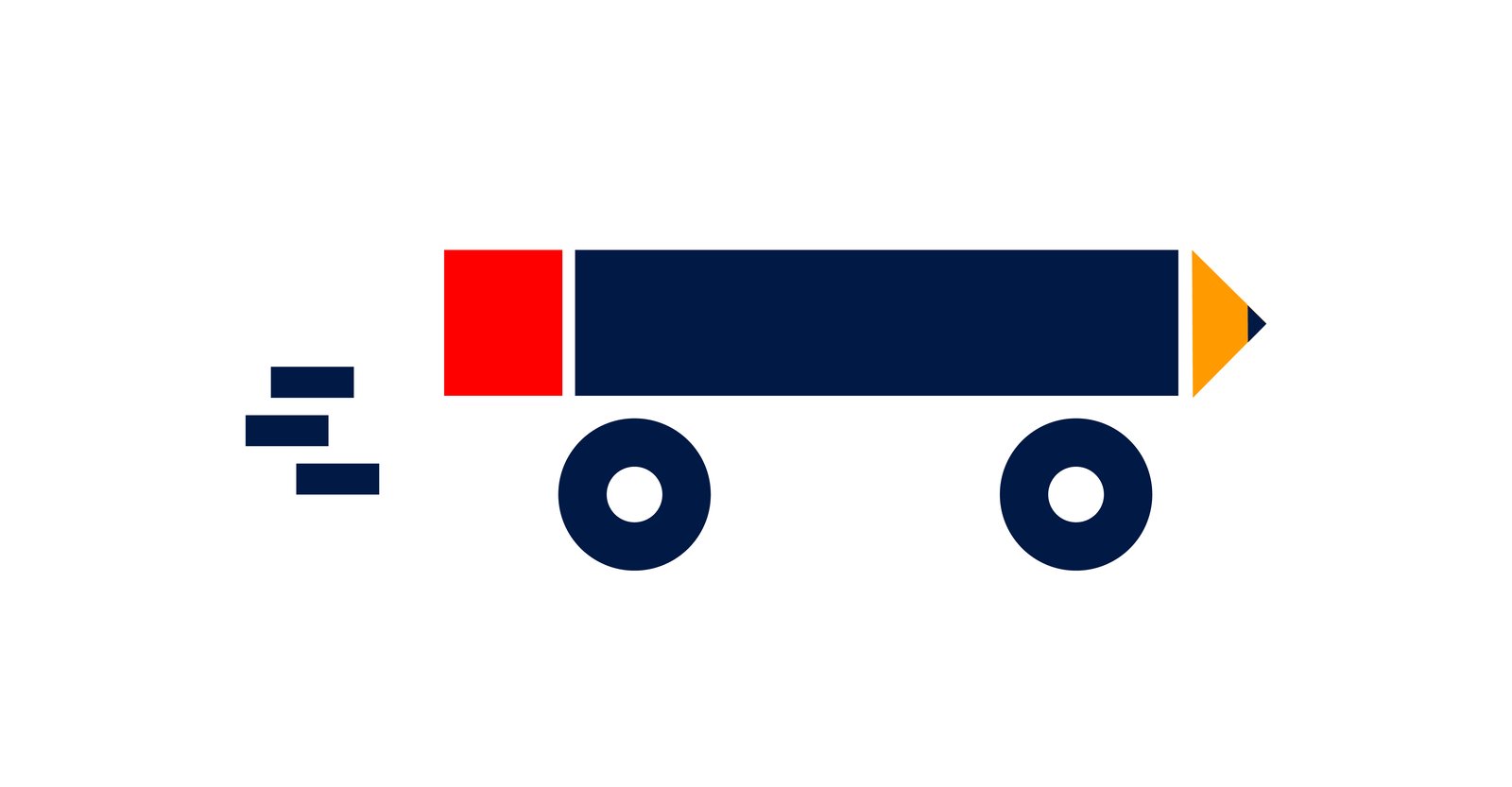Ambitious B2B marketers know that publishing original and valuable content is one of the most effective strategies for attracting, converting, and retaining customers. But B2B content creation takes time and marketers often struggle to produce enough content or to give it the promotion that it deserves.
Luckily there are some simple, actionable ways to improve your content marketing production, both in quality and output. From defining your goals to repurposing existing content, read on to discover 7 simple ways to speed up your B2B content creation in 2024.
1. Decide on your content marketing goals
All good content marketing plans start with establishing goals. Without clear aims and objectives, your content strategy will lack direction and you’re likely to waste time jumping between ideas or not seeing projects through. Take some time to consider what you want to achieve with your content as it will greatly influence the kinds of content you produce and how you measure success — more on this later on.
One of the main goals for B2B marketers is to drive more high-quality traffic to the website and/or to improve the customer journey so this traffic results in an increase in leads, conversions, or sales. Other popular content marketing goals include increasing followers on social media or encouraging more engagement; sharing content, commenting, etc.
B2B content marketing is very effective for enhancing brand awareness, so you might be hoping to ‘seed’ your content with other media outlets or encourage thought leaders to share your content on their blogs or social media.
Whatever results you are seeking, make sure you always keep your goals in mind to ensure you maintain focus on your content marketing strategy — and ultimately speed up content output.
Discover: B2B Lead Generation Strategies You Should Be Using in 2024.
2. Set up an effective content creation process
Content marketing can be time-consuming, so it’s important to set up an efficient process from day one. Here are some tips to get you started:
- Define roles and responsibilities; copywriter, editor, designer, publisher/CMS owner, promoter, data analyst; etc.
- Set up a templated, shareable content brief including word count, goal, buyer persona, structure, keyword targeting, CTA, etc.
- Devise and document clear brand and style guidelines that can be easily followed.
- Agree on sign-off processes and deadlines. Make these regular and repeatable.
Whatever content creation process you put in place, always make sure that it is realistic, actionable, and repeatable — and that it is designed to streamline and speed up your content production without impacting on quality, of course.
3. Develop or improve your buyer personas
If you aren’t sure who you are creating content for, it will take you much longer to create valuable content — it’s as simple as that.
Developing buyer personas is a great method for getting your different customer types clear in your mind and thinking about how you can serve them best. Here are a few tips to get you started when creating buyer personas:
- Analyze your customer data to find trends in behavior; how are certain types of leads finding you and what is making them convert?
- Talk to your sales and customer service team for their feedback on the types of customers they talk to. What are their interests and passions? What social media do they prefer and where do they get their news? You can also try speaking directly to your customers or checking out your reviews.
- Think about the problems your different personas have and how can you help to solve them. What are their pain points, frustrations, hopes, and aspirations? What can you do to make their lives that little bit easier?
- Segment your ideal customers into different personas. How you decide on these will be unique to your business, but if you need a little assistance head over to HubSpot to check out their free Make My Persona tool.
Make sure you share your completed personas with your team and review them regularly. Your customers and marketplace change all the time so it’s important to keep on top of what your audience needs.
4. Use the right KPIs and benchmarks
Using the right KPIs and benchmarks makes setting up and monitoring your content marketing far more efficient. Plus, it helps you allocate your budget better and informs your future strategies, thereby saving you even more time as your campaigns evolve.
Depending on the nature of your business, your content types, buyer journey, etc., it can be tricky to measure ROI with B2B content marketing activities. For example, if you’re promoting a product or service that historically has a lengthy sales funnel, it’s unlikely that someone reading your eBook or blog will immediately respond to your CTA, contact your sales department and sign up then and there.
Make sure that you choose metrics and benchmarks that suit your specific product/service and your sales and marketing goals. Here are a few metrics to consider for tracking your content marketing success:
- Website engagement; links clicked, contact forms submitted, purchases, content shares, account creations, app installs, etc.
- Website engagement; time on page, referral traffic, bounce rate, click-through rate, event tracking, etc.
- Email engagement; opens, clicks, downloads, etc.
- Conversions and sales.
- Newsletter sign-ups.
- Social media engagement; shares, likes, views, follows, etc.
- Mobile/app analytics.
- Search rankings.
- PR and media coverage.
- Customer retention rates/lifetime customer value.
Whatever metrics you choose to measure your content marketing performance, always make sure they are suited to your goals, the ways your customers consume content, and your wider sales and marketing strategy.
Even the most experienced marketers can be tempted to resort to so-called ‘vanity metrics’ — the kind of metrics that look great in a board presentation but are actually quite meaningless when it comes to acquiring or retaining customers. Keep your goals and customer behavior firmly in mind and you’ll be speeding up your content production in no time at all.
5. Focus on the best content types for your business goals
Ascertaining the best types of content for your business at an early stage saves you time with planning and production — and it helps you focus on your messaging and what your audience needs from your content.
If you are targeting commuters on their way home from work, you’ll want content that is informative and that they can immerse themselves in. If you want to reach people during their lunch hour, or over breakfast, it’s best to keep it lively and straight to the point.
You also need to think about the stage of the buyer journey your audience is at when they’re consuming your content. If they’re at the first stage — raising awareness — you’ll want content that helps to solve problems, answers questions, or fulfills a need. Blogs are great for raising awareness, as is social media marketing.
If your prospective customer is at the second stage — engagement — they should respond well to content that begins to establish trust. You’ve already demonstrated that you understand their problem, now it’s up to you to prove you’re the best candidate to solve it.
Email marketing works well in this situation, as do white papers or how-to guides. And don’t forget to include the all-important trust indicators such as testimonials and case studies to prove your credentials.
And finally — the delight stage — where you get the opportunity to build customer loyalty and create advocates. User-generated content (UGC) can be great for this, as an email marketing, social media, and loyalty program.
Pro tip: loyal customers can really help to inform your content strategy, so if it’s appropriate, ask them what content they would like more of and, while you’re reaching out, why not ask them to leave a review for your brand, too!
6. Create an actionable content calendar
The next stage is to develop a centralized content calendar that brings all your above research and insights together in one handy document that the team can refer to and add to. Here’s how to get started:
- Review your existing content assets. Are there old guides that could be repurposed into a webinar? Could you refresh your blogs to make them more current or add a sales hook nearer the top to improve engagement? Perhaps there are keywords or search terms that you need to add to help improve search rankings. Not sure where to start? Check out this guide to conducting a content audit.
- Identify gaps and opportunities in your content strategy. Refer to your personas and your market/competitor research. What do your prospective customers need more of? What are the questions that need answering? Once you have identified these, you can get started with filling these gaps.
- Map out your calendar. This includes the internal responsibilities, details of content assets, schedule, the channel(s) you are using to promote or seed your content, how you are going to track and measure, and when you will revisit the content for improvements or repurposing.
It can take a bit of work initially to get your content marketing calendar up and running, but the time investment will almost certainly pay off in the end.
Having a content calendar in place that is well thought through, has regular input from the right stakeholders, and is frequently updated, analyzed, and improved upon can help provide much-needed direction and focus to your marketing activities.
It acts as a centralized platform for collaboration and helps you visualize and analyze your strategy more effectively. It also helps with reporting to management on your marketing activities and can be really useful for allocating budgets and attributing tasks, too.
Content marketing calendars give your marketing purpose and direction so you can be as efficient as possible, without compromising on quality. When you have one in place, you’ll doubtless wonder how you got by without one! Looking for some simple tips on creating a content plan for your business? Check out our Content Marketing Guide which explains how to create a content calendar.
7. Try using a content creation platform
Creating content is a collaborative process, and while collaboration can speed things up, it can also slow things down. Oftentimes, poor processes get in the way. Different people can have different ways of organizing and approaching tasks and this can create bottlenecks or impact quality.
A good content creation platform helps to streamline some of these processes. It helps to keep your content assets organized and easy to find. It can manage templates to speed things along and allow you to repurpose content without having to search for it. And it can also help designers and brand governors to ensure that everything authors create stays on brand and on message.
Discover how the European Investment Fund (EIF) uses Foleon to speed up content creation and boost audience engagement here.


.png?width=527&name=Overcome-Content-Creation-Barriers%20(1).png)
